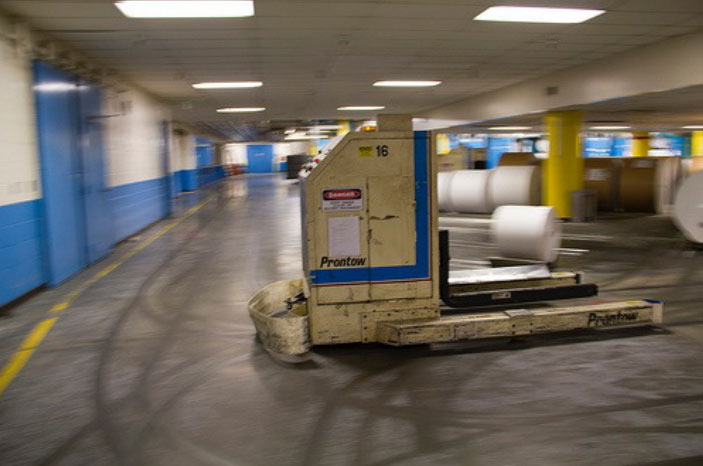Recently online retail giant Amazon made waves in the world of technology when it announced its plans to use unmanned aerial vehicles to deliver customers’ parcels from the warehouses to their doorstep in less than half an hour! The delivery service is called Amazon Prime Air and the use of air drones looks like something out of a science fiction movie – see for yourself in the video below!
Whilst it looks like there could be a good few years yet until Amazon rolls out Amazon Prime Air delivery, it got us thinking, is this what the future of warehouse distribution will look like for all companies?
Current usage of warehouse drones
Many companies are already using warehouse drones to do the leg work and heavy lifting. It is the job of these drones to lap round the warehouse picking the items off the shelves and carrying them to the human packers. Using drones helps to reduce the risk of injury by taking some of the hard labour out of warehouse jobs. It also helps to maximise efficiency by reducing the time it takes for items to be picked. Whereas in the past robots were too awkward and costly to use in the warehouse, over the last few years, they have dropped in price, with more and more retailers using them in their warehouses to keep their margins low and their profits high.

Image credit: Neon Tommy (Flickr)
Drones for palletising
Qimarox, a manufacturer based in the Netherlands have recently conducted a study into the possibility of using of drones for palletising in warehouses. They believe that soon flying robots will be used in warehouses to design compact, flexible and scalable palletising processes. The benefit of using drones for palletising is that they allow for a more flexible process, which can be redesigned at any time by simply changing the drones’ software co-ordinates. Using drones will also allow companies to increase or decrease their capacity with ease.
Challenges
Of course there are still many challenges that companies must first face if they want to use drones in their warehouses.
One of the challenges that Amazon is currently facing with its Prime Air delivery service is that it does not currently have permission from the US regulators. This is due to the fact that unmanned air vehicles do not currently have the awareness of the environment around them, to be able to avoid flying into civilians.
There is also the issue of how automating warehouses with the use of drones will affect human personnel. Could we see higher unemployment figures due to robots taking over the jobs once performed by humans?
Image credit: amazon.com
Although Amazon Prime Air is still a few years away, we cannot wait to see how the technology develops and look forward to seeing how others companies utilise the benefits of drones in their warehouses.
Keymas are a conveyor systems and automation company. Contact us today to find out how we can help automate your business
Contact Us
